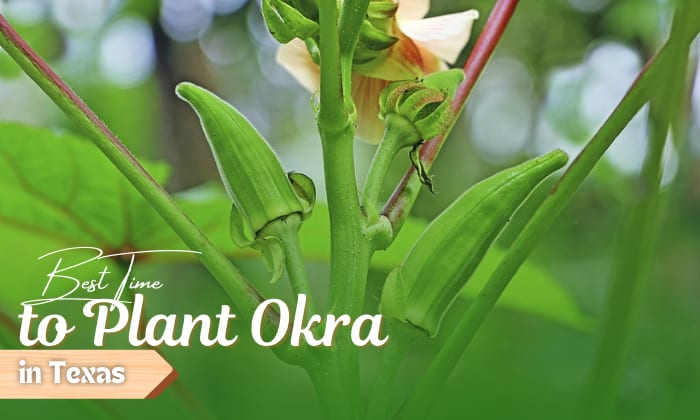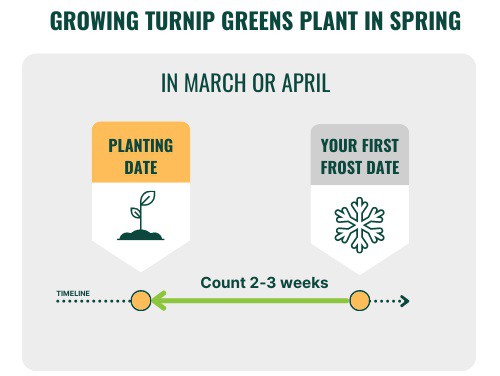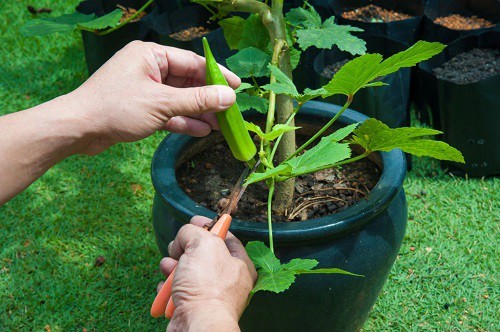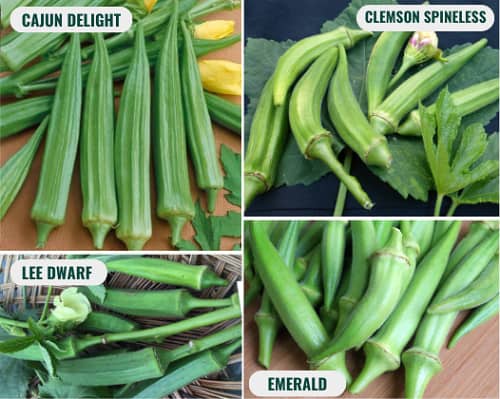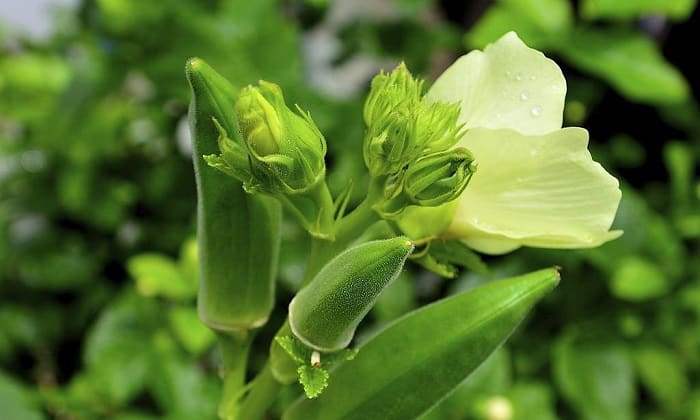Okra is a plant with a mild taste and a unique texture. It earned the nickname “lady’s fingers” due to its slim, elongated shape.
Additionally, Okra thrives greatly in hot and humid weather. This trait allows it to be compatible with adequately warm Texas soils. Frequently, okra season is around late April or May in the spring and early August in the fall.
Use this guide to learn more about when to plant okra in Texas!
Table of Contents
Best Time to Plant Okra in Texas
Like other parts of the United States, Texas experiences four distinct seasons. However, if you want to grow okra, the best time for planting is limited to spring, summer, and early fall.
It is highly recommended to plant Okra in the spring, about two to three weeks after the last frost date, for optimal yields. The ideal window for spring planting in Texas falls between March 31 and April 28. However, some parts of Texas plant later in the summer.
If you wish to extend the growing season for okra for a fall crop, you can continue sowing seeds until the end of July. This allows the plants sufficient time to mature before the cooler temperatures arrive at the end of October. The prime time for planting is just before the first fall frost, between July 15 and August 15 in Texas.
You can refer to this table to determine your area’s last spring and first fall frosts!
| Place | Last Spring Frost | First Fall Frost |
| Dallas | Mar 9 | Nov 20 |
| Austin | Mar 18 | Nov 10 |
| Harris | Mar 15 | Nov 16 |
| Temple | Mar 22 | Nov 11 |
| Sherman | Mar 22 | Nov 12 |
Things to Evaluate Before Growing Okra in Texas
1. USDA Hardiness Zone
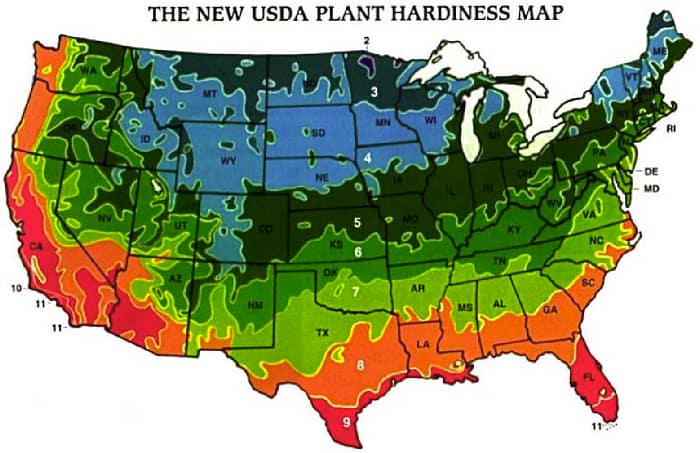
Okra needs a minimum of 6-8 hours of direct sunlight daily in a warm environment, and the ideal temperature range for flowering and fruit production must reach between 75 and 95°F (23-35°C).
Thus, the perfect time for planting is when the threat of frost has passed to ensure its growth, and the temperature remains consistently above 55-60°F (13-16°C).
Remember that Okra requires a USDA hardiness zone of 5-12 to thrive. Since Texas belongs under zones 6-9B and has subtropical parts, they can cultivate Okra throughout the year.
| USDA Hardiness Zone | Texas Gardening Zone |
| Zone 6 | Zone I |
| Zone 7 | Zone II |
| Zone 8 | Zone III |
| Zone 9A | Zone IV |
| Zone 9B | Zone V |
2. Climate
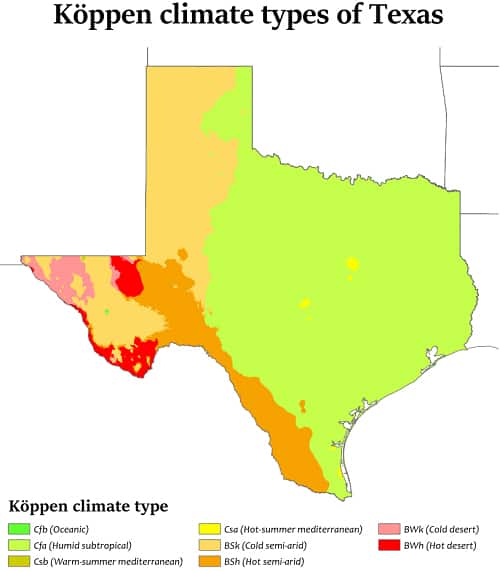
Texas has a variety of climates and planting zones because of its big size and topographical variations. Therefore, according to the Koppen Climate System, the state’s climate is classified into two types based on the rate of precipitation: Dry and Temperate.
The dry climate covers the Trans-Pecos region in the west, which is a third of Texas; meanwhile, the remaining two-thirds which is East Texas experience a temperate climate.
3. Planting Method
1. Direct Seeding
The primary approach used when growing Okra is direct seeding. This is how the method is done.
-
- Plant the okra seeds at an approximate depth of ¾ to 1 inch in rows spaced 42 inches apart for dwarf varieties.
- There should be about 3 to 4 inches of spacing between rows to facilitate easy harvesting. As the plant grows, thin the space out by removing some. For dwarf varieties, leave 12 to 15 inches in between, and 18 to 24 inches for regular ones.
2. Planting in Containers
Planting in containers is the best alternative if you need more backyard space for gardening. Any okra variety can be grown; however, the dwarf type is preferable since they don’t grow taller than 5 feet. The following shows the planting process.
-
- Since Okra does not transplant well because of its taproot, plant the seeds directly in a biodegradable pot or container. Put 2-3 okra seeds about 1/2 to 1 inch deep in each pot.
- Water them thoroughly using a sprayer.
- Keep the container bright and warm to ensure soil moisture until germination.
Best Okra to Grow in Texas
Surprisingly, although eaten as a vegetable, Okra is botanically classified as a fruit! Originating from Ethiopia, early settlers brought Okra to North America centuries ago. Here are a few okra varieties that are well-suited in Texas.
- Cajun Delight – a renowned variety of Okra. It is characterized by having delicious and tender pods with reduced fiber build-up.
- Clemson Spineless– Compared to other types of Okra, this variety has smooth, spine-less leaves and stems. This trait allows gardeners to handle the plant without experiencing irritation.
- Emerald– a stunningly vibrant and early maturing variety of Okra. It serves as an heirloom for Campbell’s Soup Company, which initially cultivated it in the 1950s.
- Lee Dwarf– a variety of Okra that grows to less than 3 feet tall. Despite its short height, it produces a generous yield. Additionally, it is well-suited to grow in containers.
This table contains the specifics of each variety!
| Variety | USDA Hardiness | Exposure | Okra Planting Time | Maturity Time | Fruit Size |
| Cajun Delight | 11-12 | Full Sun | Summer | 50-55 days after planting | 3-5″ /
8-13cm
|
| Clemson Spineless | 5-11 | Full Sun | Summer | 50 to 64 days after planting | 3″ / 8 cm |
| Emerald | 5-12 | Full Sun | Summer | 55 days after planting | 6-7″/ 15-17 cm |
| Lee Dwarf | 5-11 | Full Sun | Summer | 55 days after planting | 6-7″/ 15-17 cm |
Planting Guide and Tips
1. Soil Preparation
When preparing for the Okra growing season, use loamy and rumbly soil with a mix of clay that will allow good drainage.
Maintaining a slightly acidic soil pH, with the optimal range being 5.5 to 5.8 on the pH scale, is suitable for Okra. Keeping the soil at this acidity level will support the healthy growth of your okra plants.
2. Maintenance
- Sunlight – Always keep in mind that they cannot tolerate shade. To ensure proper growth, make sure each plant receives an ample amount of direct sunlight for healthy plant development and abundant yield.
- Water – Although Okra can survive in dry conditions, it still requires frequent watering. This method yields higher in fertile soils such as Central and Southern Texas. To maintain proper moisture levels, provide a deep soaking once every 7 to 10 days.
3. Harvest
After the Okra starts producing fruit, it needs to be harvested regularly. Two months after planting, it will begin to bloom. The fruits will later appear 5-7 days post-flowering. The ideal length to pick okra fruit is when it reaches about 3 to 5 inches long.
Frequently Asked Questions (FAQs)
Can my okra plant grow healthily in North Texas?
The north has a much lower USDA Hardiness Zone than other parts of Texas. However, this doesn’t stop your okra plant from thriving. Always remember that Okra is compatible with zones 5-12, which includes the north.
When is it too late to harvest okra fruit?
Make sure to harvest the fruits while they are still tender. If they are left too long, they turn tough and fibrous, making them inedible.
How frequently should I fertilizer my okra plant?
After the plants grow to a height of 6 inches, you can apply a water-soluble fertilizer every 4-6 weeks.
Conclusion
With the help of this guide, you will discover the secrets of when to plant Okra in Texas! Through your newfound understanding of Okra’s love for warmth, you now know the ideal time to sow okra seeds to maximize your yield. Equipped with a planting guide and maintenance tips, you’re well prepared for growing Okra.
Say goodbye to uncertainty and say hello to successful okra cultivation. Take advantage of this opportunity to cultivate your own fresh Okra at home!

Hi, I am William – Floridayards’ digital content creator. My job is to find answers to all your concerns with thorough research and our team’s expert advice. I will also bring you honest reviews on the best products and equipment for raising your beautiful garden. Please look forward to our work!


